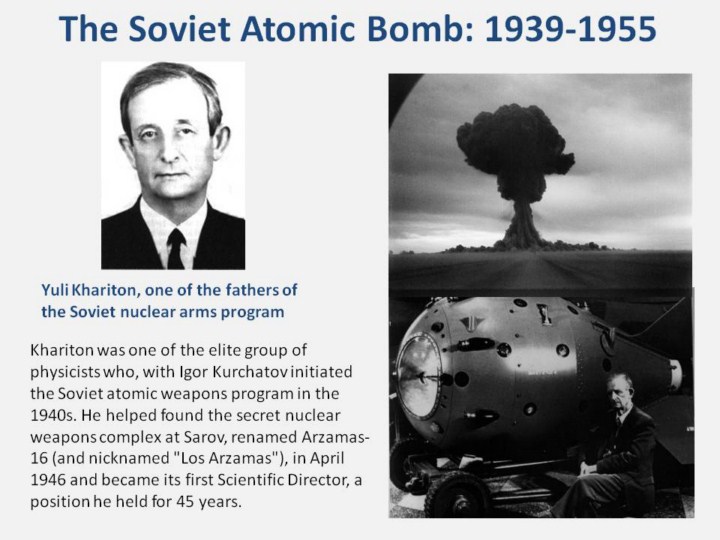| front |1 |2 |3 |4 |5 |6 |7 |8 |9 |10 |11 |12 |13 |14 |15 |16 |17 |18 |19 |20 |21 |22 |23 |24 |25 |26 |27 |28 |29 |30 |31 |32 |33 |34 |35 |36 |37 |38 |39 |40 |41 |42 |43 |44 |45 |46 |47 |48 |49 |50 |51 |52 |53 |54 |55|56 |review |
 |
The Soviet weapons program proper began in 1943 during World War II, under the leadership of physicist Igor Vasilievich Kurchatov. The program was initiated by reports collected by Soviet intelligence about the rapidly growing Manhattan Project in the U.S. It remained largely an intelligence operation until the end of the war, but it was a highly successful one, due to sympathies of many for the wartime Soviet Union fighting Nazi Germany; the socialist political sympathies of some; and the weak security screening program necessitated by the hasty assembly of the vast program. Klaus Fuchs, an important physicist at Los Alamos, was by far the most valuable contributor of atomic information. On 22 November 1955 the USSR conducted its first test of a multi-stage thermonuclear device. The device, the RDS-37, was designed as a nuclear gravity bomb with a full yield of about 3 megatons. The test version was modified to reduce the yield to an expected 1.45 megatons, to reduce the risk to the local population. It was airdropped from a Tupolev-95 bomber over Technical Area Sh ("Ground Zero") at the Semipalatinsk Test Site in Kazakhstan. It detonated with a yield of 1.6 megatons at altitude of 1,550 meters. Civilians in nearby villages had been warned as a precaution, but one child who ran back into a house immediately after the detonation was killed when the blast wave arrived and caused the roof to collapse. Another 42 were injured by glass fragments. A trench collapsed onto soldiers observing the detonation at 36 km from ground zero, killing one from suffocation and causing contusions to five others.
|